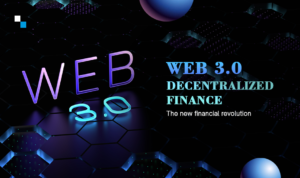The blockchain ecosystem is revolutionizing the way we think about digital assets and their ownership. At its core, blockchain technology is a decentralized digital ledger that records transactions across a network of computers. This technology is most commonly associated with cryptocurrencies like Bitcoin and Ethereum, but its potential applications go far beyond financial transactions. In this article, we will explore the boundaries of the blockchain ecosystem and how it is transforming the way we think about digital assets.
- Cryptocurrencies and Tokens
Cryptocurrencies like Bitcoin and Ethereum are perhaps the most well-known applications of blockchain technology. These digital assets use cryptography to secure transactions and verify the transfer of ownership. But cryptocurrencies are just the tip of the iceberg when it comes to the potential of blockchain technology. Tokens, for example, can be used to represent a wide range of assets, from digital art and collectibles to real estate and intellectual property.
- Decentralized Finance (DeFi)
Decentralized finance, or DeFi, is a growing ecosystem of financial applications built on blockchain technology. These applications allow users to borrow, lend, trade, and invest without the need for traditional financial intermediaries like banks. DeFi platforms use smart contracts, which are self-executing contracts that automatically enforce the terms of an agreement. This allows for secure and transparent transactions without the need for intermediaries.
- NFTs and Digital Ownership
Non-fungible tokens, or NFTs, are digital assets that are unique and cannot be replicated. These tokens have become increasingly popular in the art world, where they are being used to represent digital art and collectibles. NFTs use blockchain technology to verify ownership and ensure that a digital asset is one-of-a-kind. This has the potential to revolutionize the way we think about ownership in the digital age, where many assets are easily replicated and shared.
- Supply Chain Management
Blockchain technology has the potential to improve supply chain management by increasing transparency and accountability. By recording transactions on a shared ledger, blockchain can provide a clear and unalterable record of the movement of goods and services. This can help to reduce fraud and improve efficiency in supply chains.
- Social Impact
Blockchain technology has the potential to have a positive social impact by increasing transparency and accountability. For example, blockchain can be used to ensure that aid and charitable donations are distributed fairly and transparently. It can also be used to provide secure digital identities to those who do not have access to traditional identification documents, which can help to increase financial inclusion and access to services.
In conclusion, the blockchain ecosystem is transforming the way we think about digital assets and ownership. While cryptocurrencies like Bitcoin and Ethereum are the most well-known applications of blockchain technology, its potential applications go far beyond finance. From decentralized finance and NFTs to supply chain management and social impact, blockchain technology has the potential to revolutionize industries and improve our lives. As this technology continues to evolve, it will be important to consider the opportunities and challenges that it presents and work towards creating a future that is inclusive, equitable, and sustainable.






Be First to Comment